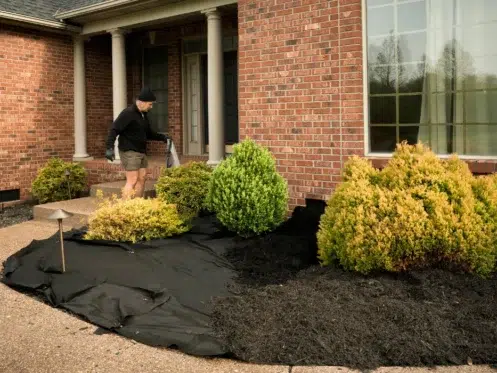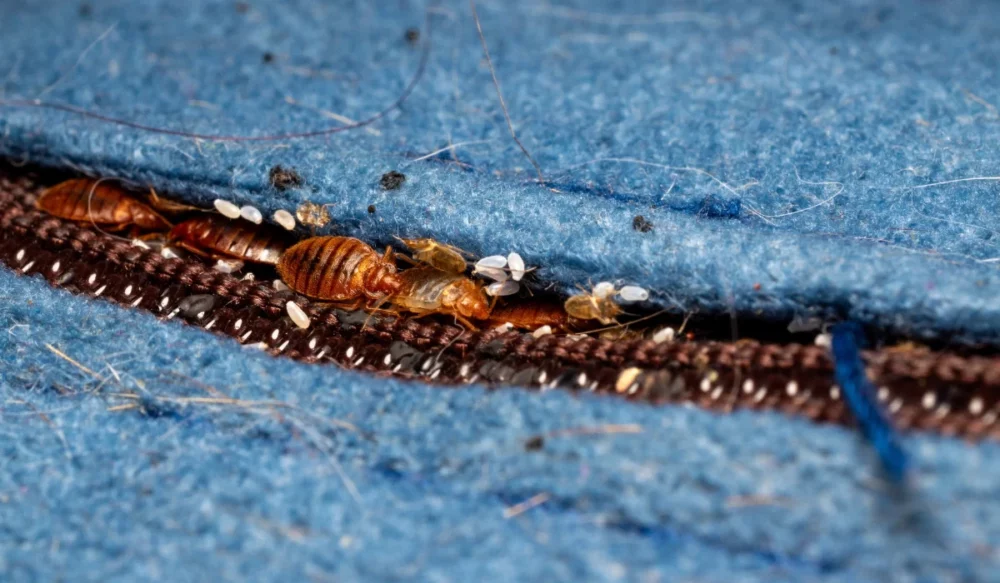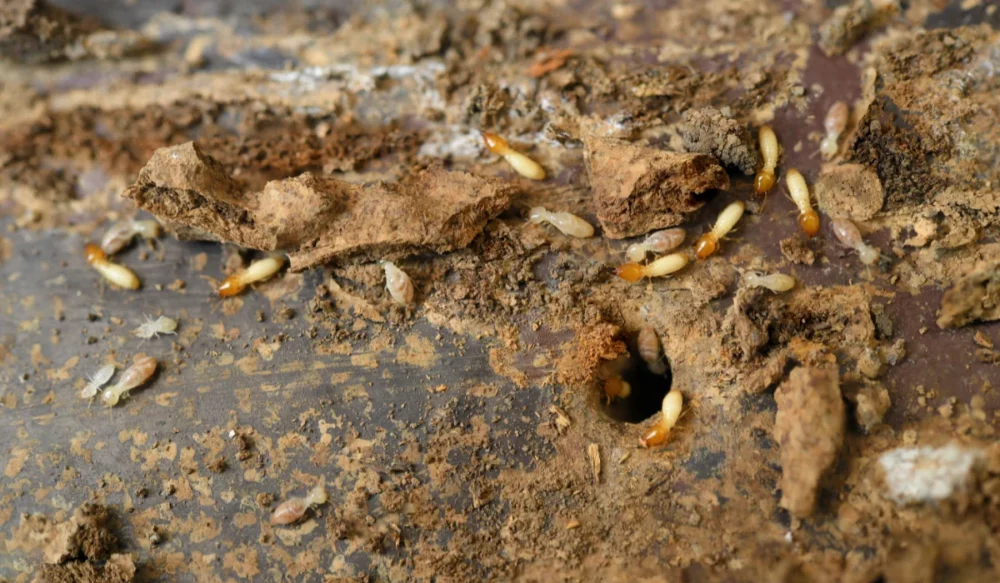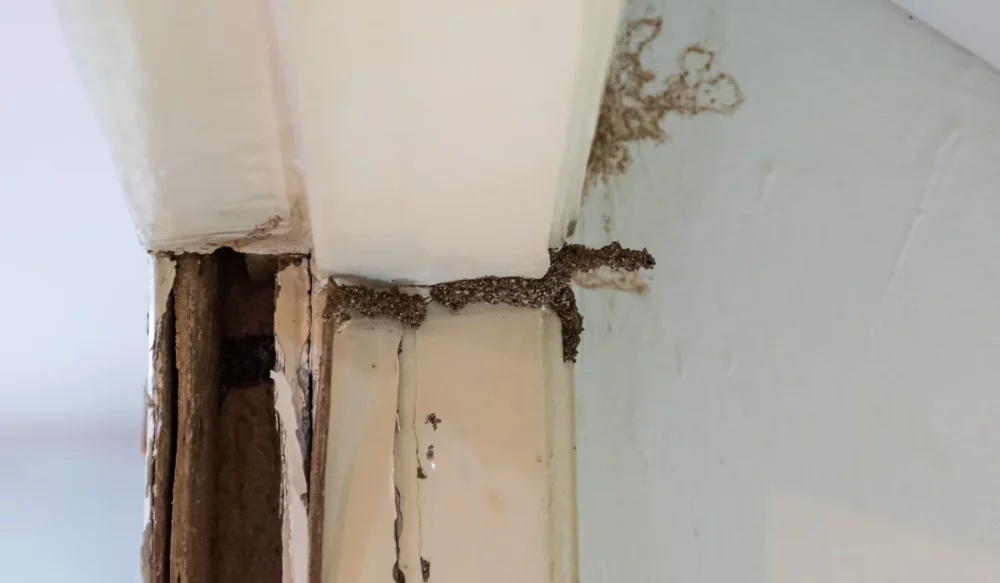Mulch is common in Arizona yards. It keeps beds neat, improves soil moisture, and helps control soil temperature. But many people wonder: Does mulch attract pests? Homeowners in Phoenix, Scottsdale, Chandler, and Tucson often find bugs living in mulch beds.
Mulch helps plants, but it can also create perfect conditions for pests like termites, ants, and roaches. Knowing which mulches attract bugs and how to use them safely helps prevent infestations.
With wise choices, you can keep your yard looking great and deter pests from your home.
Key Takeaways
- Some mulches attract pests by adding moisture, shelter, and food.
- Wood chips and bark can attract termites, roaches, and carpenter ants.
- Keep mulch away from your foundation to lower the risk.
- Replace old mulch with pest-resistant options, such as cedar or inorganic choices, to help prevent infestations.
Does Mulch Attract Pests?
Mulch holds moisture that many insects like. Organic materials in mulch can also feed termites and other bugs. If you don’t manage it, pests can spread and damage nearby wood.
In Arizona’s dry climate, mulch can be even more appealing. Carpenter ants, centipedes, cockroaches, and earwigs seek shelter and moisture in mulch. Termites go even further; they can live in mulch and use it as a food source.
Types of Mulch and Pest Attraction
Different mulches attract pests to varying degrees. Knowing the differences helps you make informed choices.
Organic mulches, such as wood chips, bark mulch, pine straw, and grass clippings, improve soil quality and enhance moisture retention as they break down; however, this same decay can also attract pests. For example, wood chips often attract termites, while bark can shelter roaches and other pests.
Some options are less pest-friendly. Cedar and cypress mulch contain natural oils that repel certain insects, but they aren’t foolproof. Used too thickly or too close to the house, even cedar can draw pests.
Rubber mulch is an inorganic option. It doesn’t decompose, so it doesn’t feed termites, but thick layers can still create moist hiding places.
Does Mulch Attract Termites?
One of the biggest concerns for Arizona homeowners is whether mulch attracts termites. Old mulch and wood chips can raise the risk of termite infestations. Termites use mulch as a cover, thrive in moist environments, and often build colonies nearby.
If mulch touches decks, fences, or siding, termites can bridge into the house. For that reason, experts recommend leaving a clear space between mulch beds and your foundation.
How Mulch Attracts Bugs
Mulch attracts bugs because of three main factors.
- Mulch helps the soil retain water, creating a moist environment that many pests prefer.
- As mulch breaks down, it provides nutrients and attracts pests that feed on decay.
- Mulch provides shelter from Arizona’s heat, which can attract unwanted garden pests.
This mix doesn’t just draw termites. It can also bring carpenter ants, aphids, fleas, and other plant-damaging pests.
How to Use Mulch Without Attracting Pests
You don’t have to skip mulch. Focus on how you use it.
Apply mulch in thin layers, no more than three inches deep. Thicker layers trap too much moisture and can invite pests. Keep mulch at least 12 inches from your foundation and wood. This gap makes it harder for termites and roaches to move in.
Refresh mulch regularly. Old mulch breaks down more quickly and attracts pests. Replace it every year or two. You can also plant pest-deterring flowers, such as marigolds, near garden beds.
Inorganic Mulch Options
To reduce pest issues, consider inorganic mulch. Gravel, stone, and rubber don’t break down, so they don’t feed pests and allow better air flow.
Inorganic mulches have trade-offs. They do not enrich the soil as effectively as organic mulch does, and they can raise the soil temperature in Arizona’s already hot climate. Choose the balance that best suits your yard’s soil health and pest prevention needs.
Making the Right Mulch Choice for Arizona Homes
Mulch enhances your yard’s look and health, but keeping it pest-free takes the right approach. If you start noticing pests in your beds, it may be time for expert help.
Green Home Pest Control offers eco-friendly solutions that protect your home while keeping your family and pets safe.
Need professional pest control in Phoenix, Scottsdale, Chandler, or Tucson?
Contact us today to schedule your service.
FAQs
Does mulch attract bugs to every yard?
Mulch does not always lead to pest problems, but the risk increases if it is applied too thickly or placed directly against your home’s foundation. Proper use of mulch helps limit attraction.
What mulch is best for avoiding termites?
Cedar mulch, cypress mulch, and rubber mulch are better choices because they do not serve as a strong food source for termites. Still, keeping mulch away from wooden structures is essential.
How often should I replace mulch to prevent pests?
Most experts recommend replacing mulch every one to two years. Fresh mulch helps reduce the buildup of decaying organic matter that pests feed on, thereby maintaining healthier landscaping.




